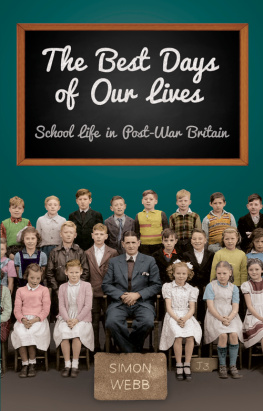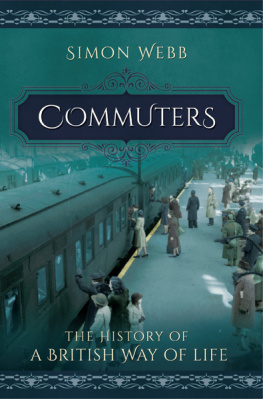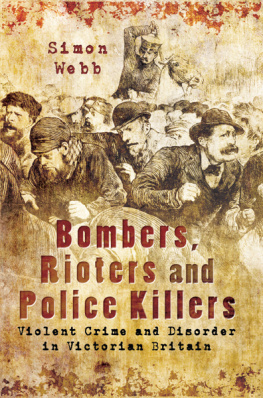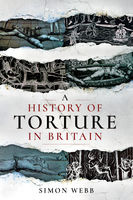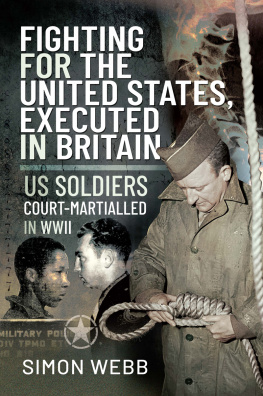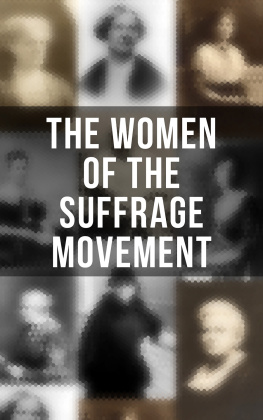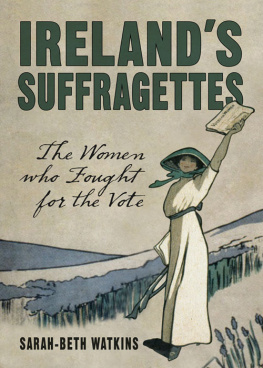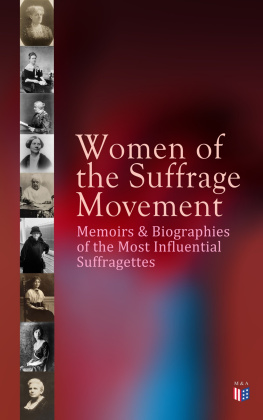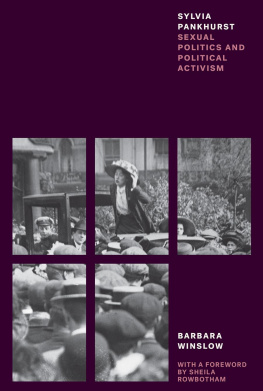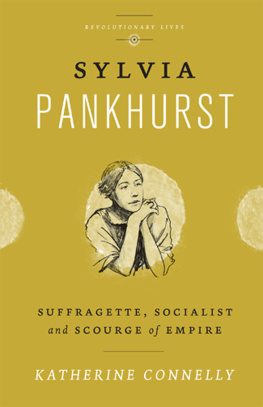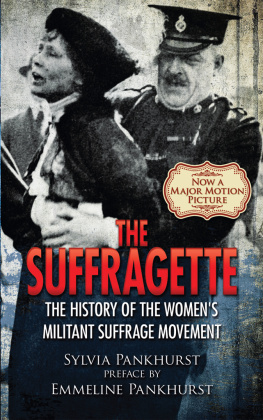Suffragette Fascists
Suffragette Fascists
Emmeline Pankhurst and
her Right-Wing Followers
Simon Webb
First published in Great Britain in 2020 by
Pen & Sword History
An imprint of
Pen & Sword Books Ltd
Yorkshire - Philadelphia
Copyright Simon Webb, 2020
ISBN 978 1 52675 688 6
eISBN 978 1 52675 689 3
Mobi ISBN 978 1 52675 690 9
The right of Simon Webb to be identified as the Author of this work has been asserted by him in accordance with the Copyright, Designs and Patents Act 1988.
A CIP catalogue record for this book is available from the British Library.
All rights reserved. No part of this book may be reproduced or transmitted in any form or by any means, electronic or mechanical including photocopying, recording or by any information storage and retrieval system, without permission from the Publisher in writing.
Pen & Sword Books Ltd incorporates the Imprints of Pen & Sword Archaeology, Atlas, Aviation, Battleground, Discovery, Family History, History, Maritime, Military, Naval, Politics, Railways, Select, Transport, True Crime, Fiction, Frontline Books, Leo Cooper, Praetorian Press, Seaforth Publishing, Wharncliffe and White Owl.
For a complete list of Pen & Sword titles please contact
PEN & SWORD BOOKS LIMITED
47 Church Street, Barnsley, South Yorkshire, S70 2AS, England
E-mail:
Website: www.pen-and-sword.co.uk
or
PEN AND SWORD BOOKS
1950 Lawrence Rd, Havertown, PA 19083, USA
E-mail:
Website: www.penandswordbooks.com
List of Illustrations
Enamelled badge showing the well-known suffragette slogan; Votes for Women.
The real policy of the WSPU; Votes for some Women.
The headquarters of the WSPU, in Londons Kingsway.
Emmeline Pankhurst as a National Treasure.
Newspaper headlines about suffragette bomb attacks.
The classic image of the suffragettes as victims.
How Emmeline Pankhurst and her followers wished to be seen.
Herbert Jones, the man nearly murdered by the suffragettes.
Emily Davison, the fanatical terrorist who almost killed several people by her antics.
The aftermath of the bombing of Holloway Prison in 1913, carried out with a complete disregard for innocent lives.
The charred remains of the teahouse at Kew Gardens.
The great Portsmouth dockyard fire of 1913.
How Sylvia Pankhurst described Herbert Samuel, the British Home Secretary.
Flora Drummond, an anti-Semite and leading suffragette.
A British concentration camp, of the kind favoured by Christabel Pankhurst.
Sir Oswald Mosley and some of his female admirers.
A rally of 20,000 British fascists in the summer of 1939.
Adela Pankhurst, the Pankhurst sister who was imprisoned during the Second World War for her pro-Nazi sympathies.
Commandant Allen, flanked by two members of her Womens Auxiliary Force.
Yet another suffragette who liked uniforms; Mary Leigh, who set fire to and bombed a crowded theatre in 1912.
Introduction
T he suffragettes are unique among British political groups of the twentieth century in that over a hundred years later, we still take them at their own estimation. In other words, we accept without question what they said about themselves at the time and treat their propaganda today as being objectively true. This is very strange, because it means that we accord them a respect, even veneration, which is not granted to any other past political party or faction. The peculiar regard in which the suffragettes, the militant members of the Womens Social and Political Union (WSPU), are held has tended to stifle criticism and discourage close examination of what they actually stood for. Nowhere is this more clearly demonstrated than in that most famous of suffragette slogans, one of the most memorable and well-known catchphrases in political history; Votes for Women.
At first glance the words, Votes for Women, shown in , from the Friday, 27 August 1909 edition of the Votes for Women newspaper;
The Womens Social and Political Union are NOT asking for a vote for every Woman.
This means of course that a more accurate way of expressing the aim of the suffragettes would have been to cry, Votes for some Women, which is not nearly as pithy and concise. Hearing a slogan such as this would also inevitably cause listeners to ask which women were to be given the vote and who would be denied it? The answer is simple and disturbing; the Parliamentary franchise for working-class women was never something that Emmeline Pankhurst wanted and she and her suffragettes fought only so that propertied and university-educated women should be given the vote. Little wonder that at the time critics suggested that a more apt slogan for the suffragettes would have been Votes for Ladies. This is a strange and unwelcome truth and it is scarcely surprising that few people today are keen to confront the full implications of it. One wonders how many people today are aware that the suffragettes were really fighting so that just upper and middle-class women could have the vote?
The difference between the easily-remembered slogan and what one might term the fine print, or terms and conditions, attached to the demand for the franchise, provides us with a perfect illustration of how the real history of the suffragettes has become obscured and forgotten. On 16 June 2019 a search on Google for Votes for Women returned 2,770,000 results. A search for The Womens Social and Political Union are NOT asking for a vote for every Woman, on the other hand, gave just four results. The official policy of the WSPU has thus become almost lost to us and all that is now remembered is the meaningless, but memorable, slogan. The propaganda soundbite is known to us all, but scarcely anybody knows what the suffragettes were really fighting for.
That the suffragettes were engaged in a fierce struggle for democracy as we know it today, that is to say every adult man and woman having the vote, is of course now taken as a given by almost everybody. One need only look at what happened on the centenary of the legislation which gave some women the right to vote in Parliamentary elections.
On 10 June 2018, tens of thousands of women from across the United Kingdom took part in marches to commemorate the passing of the Act of Parliament in 1918 which gave some British women the vote. The suffragette colours of purple, white and green were very noticeable, and the banners carried in London, Belfast, Edinburgh and Cardiff made frequent mention of equality, as though this was something with which the suffragettes were associated. Few of those taking part in these inspiring events were likely to be aware that Emmeline Pankhurst and her daughter Christabel had a furious falling-out with the Labour Party, after members passed a resolution calling for a universal franchise, the vote for every adult man and woman. This modern notion of democratic equality was not at all what Emmeline Pankhurst and her followers wanted.


